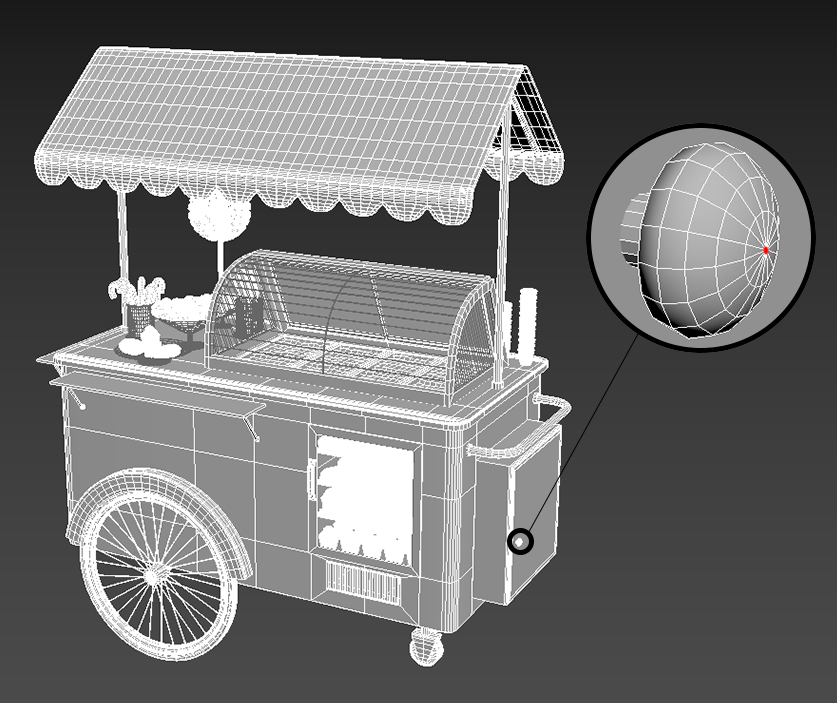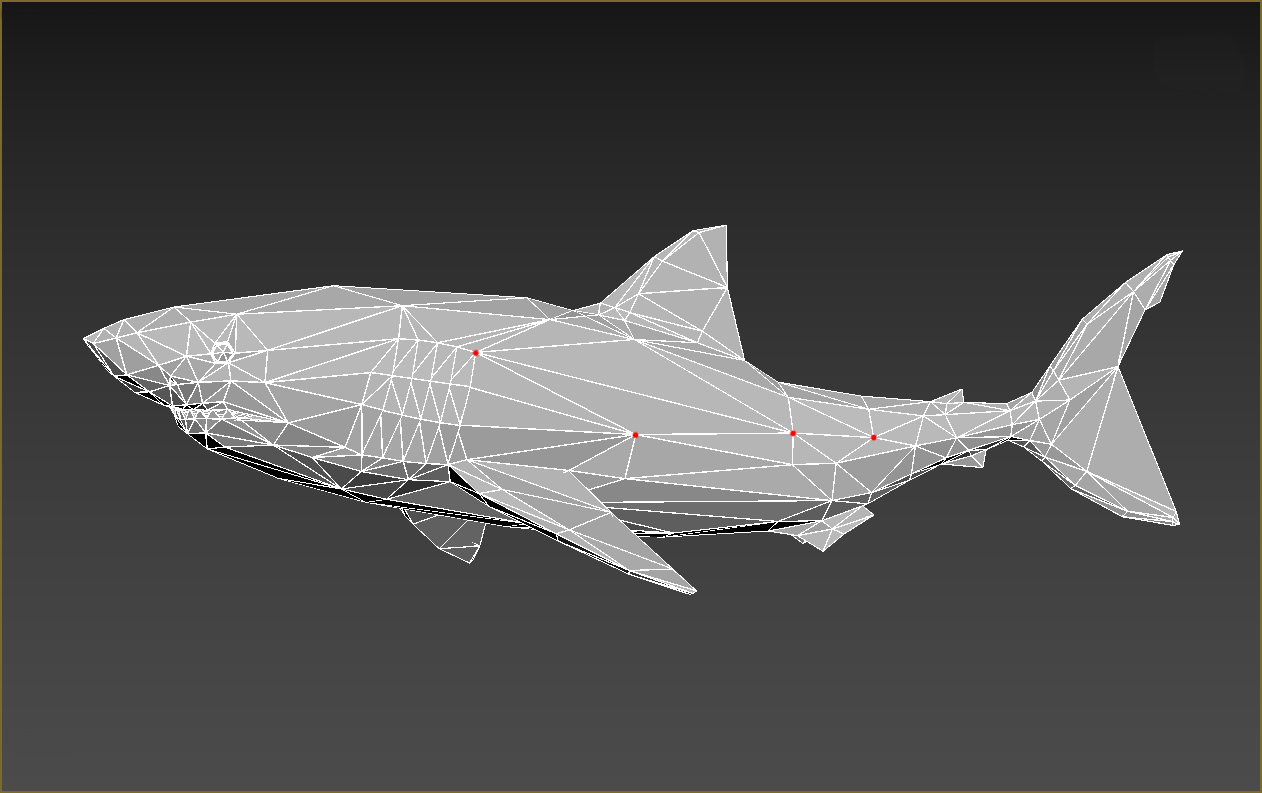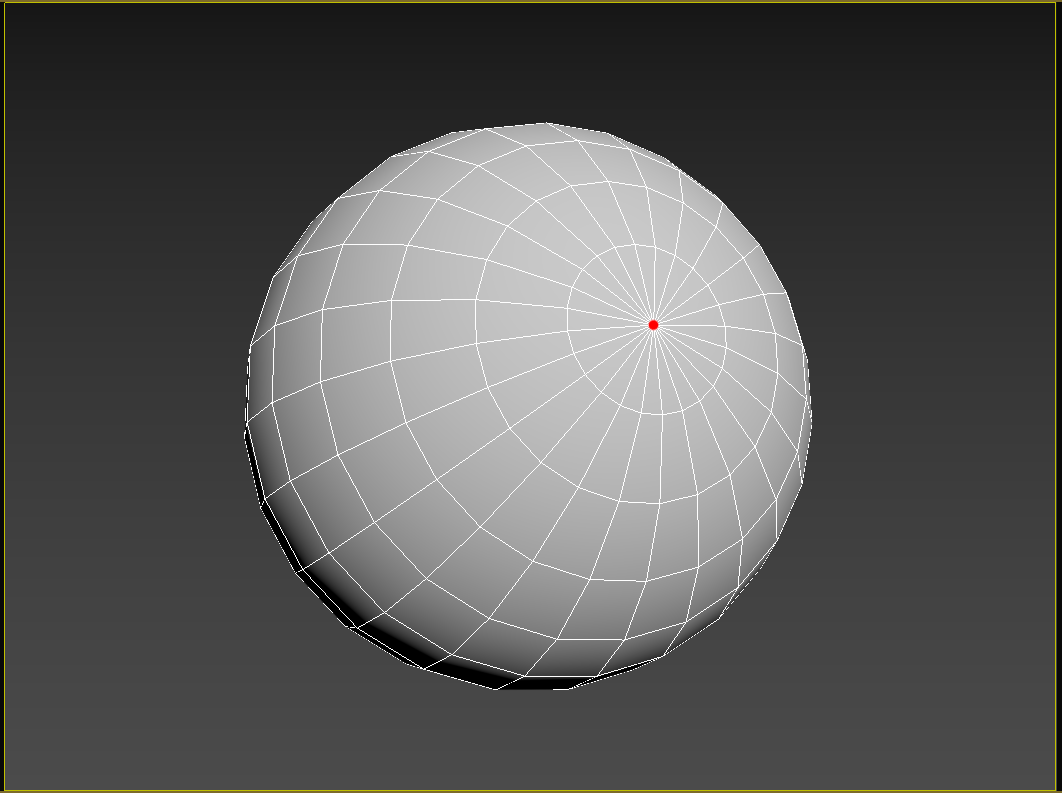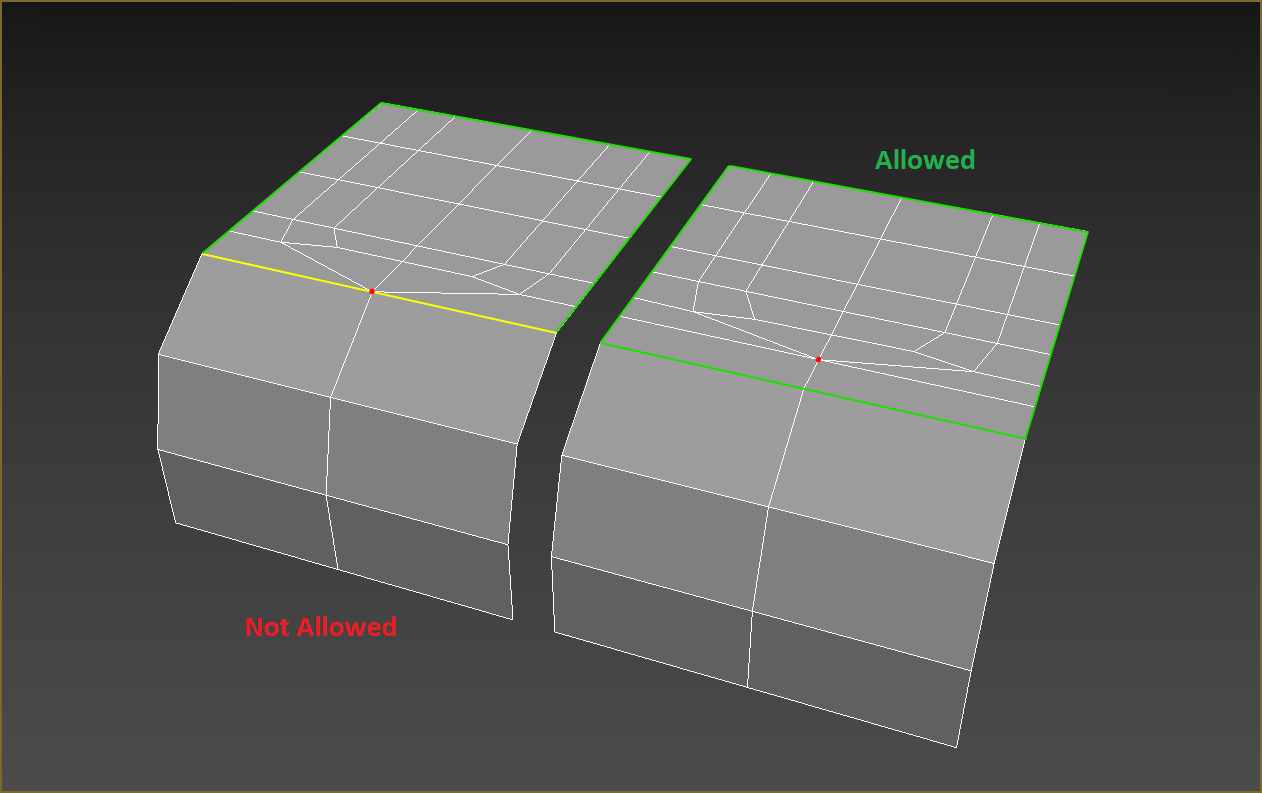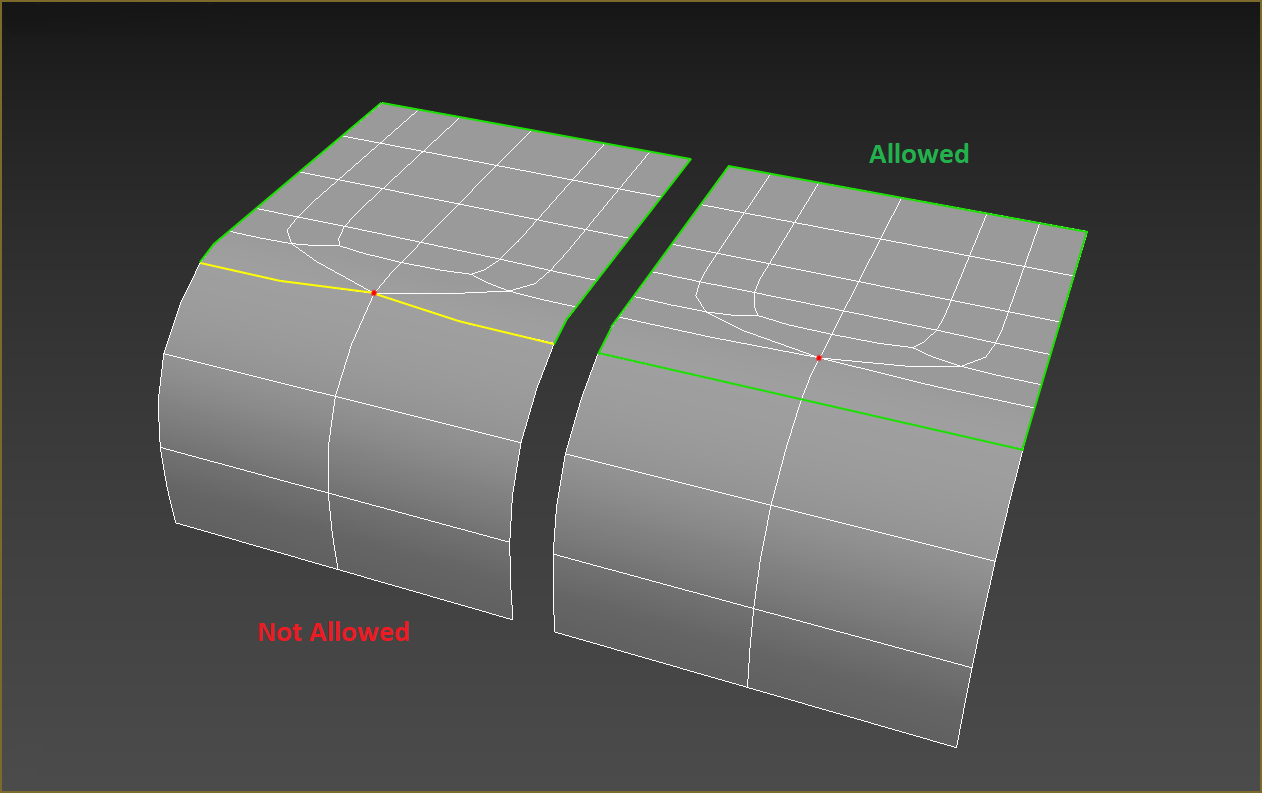A pole is a set of edges that merge into a single vertex. Avoiding poles with six or more edges on a curved surfaces is something that you should incorporate into your modeling workflow.
It is best practice for you to avoid poles when modeling. Using poles can interrupt a customer’s workflow when they subdivide. When a customer subdivides a model with poles, the result will be a “star” pattern in the topology. This can make modifying and editing your model difficult for customers.
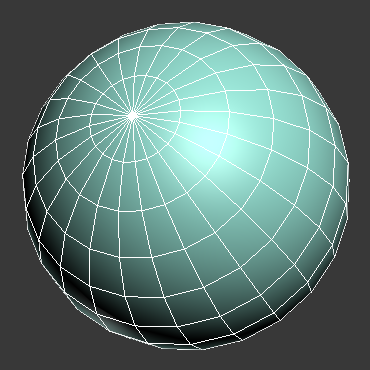
Pole at the tip of sphere primitive
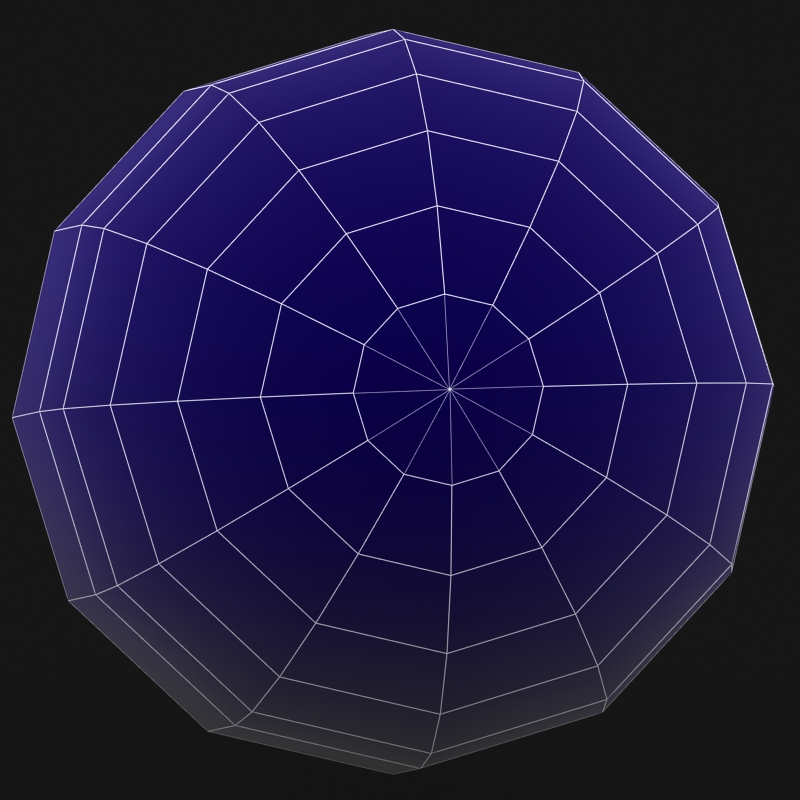
Pole with no subdivision
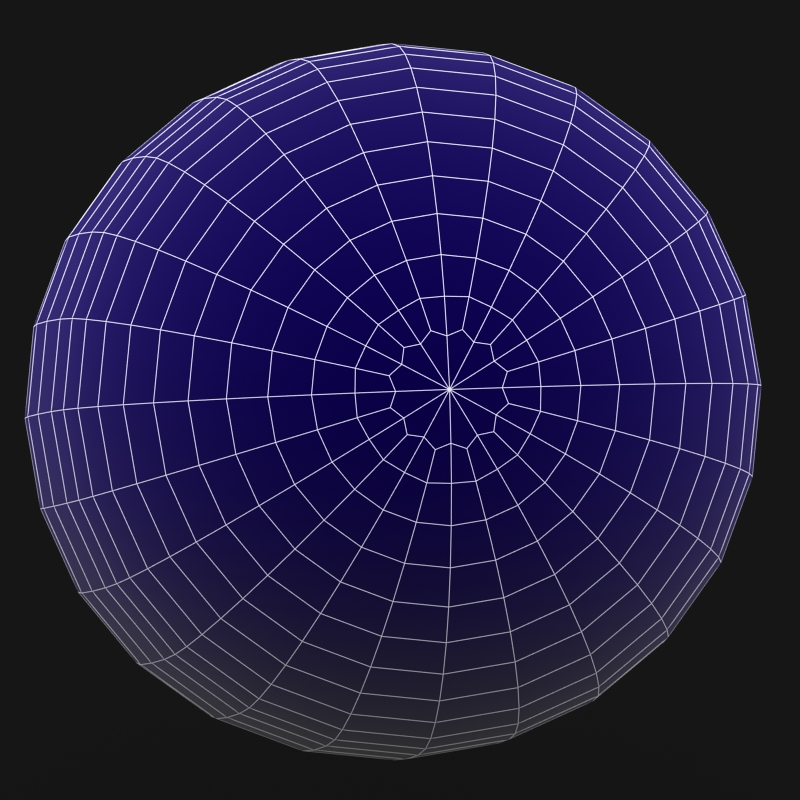
Pole with subdivision level 1

Pole with subdivision level 3
When a customer renders a subdivided model the includes poles, the renderer interprets the pole as a sharp point that causes a break in highlights and textures. This may only be evident at certain angles, but customers reasonably expect models to render without errors regardless of the angle. Avoiding poles is another way to make your model more desirable to customers as it allows them more freedom in using and manipulating models they purchase.
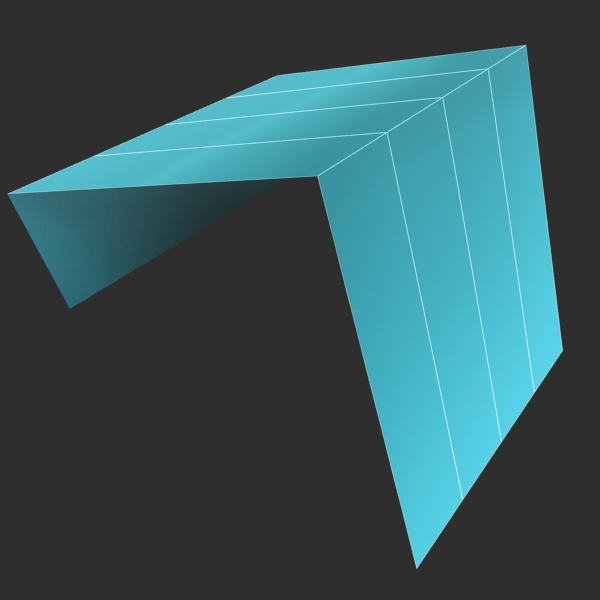
Subdivision 0 – No Poles
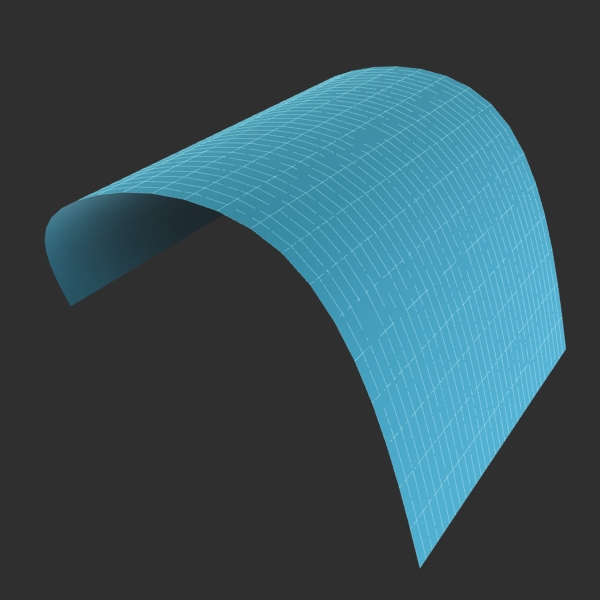
Subdivision 3 – No Poles
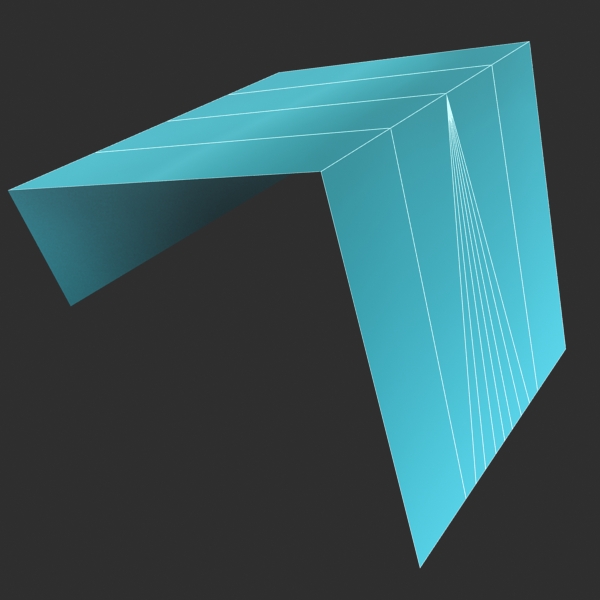
Subdivision 0 – Pole
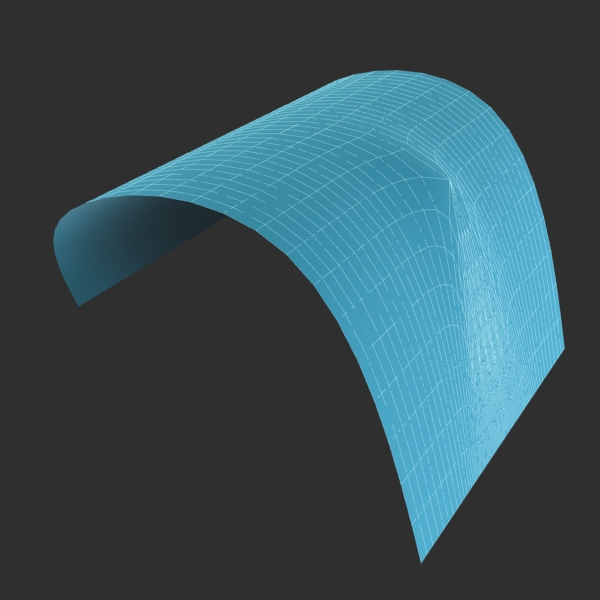
Subdivision 3 – Pole
Very Small/Insignificant Objects
This includes objects such as screws, bolts, rivets, wires, and other objects which are very small in comparison to the overall model size.
Realtime Models
This is for models intended for game engines, realtime display, or background elements that are typically built with a high percentage of triangles. Provided the triangles are used to retain the model shape while still maintaining the lowest number of polygons possible, the poles created from them are expected.
Hemispherical Tips
These are the triangular poles that are generated as part of primitive spheres. We would still recommend that you build your spheres with quad caps whenever possible.
Flat Surfaces
While on a flat surface, it is best to isolate the vertex of a pole so it is not directly connected to the edge of your model where a curve begins. This isolation helps prevent pinching as the topology changes over the curved surface (it will appear as a visual smoothing artifact on the surface).

